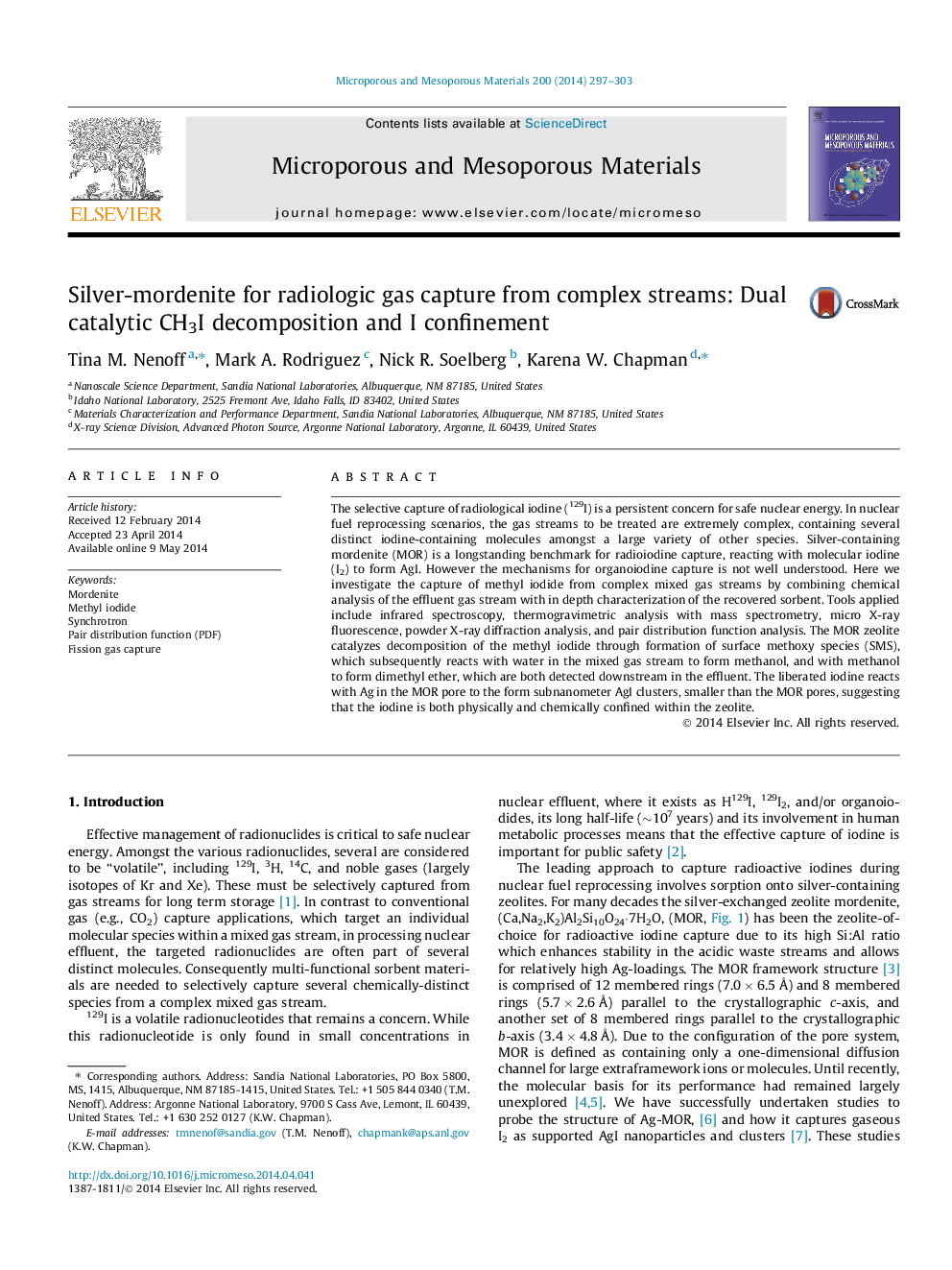| Article ID | Journal | Published Year | Pages | File Type |
|---|---|---|---|---|
| 72716 | Microporous and Mesoporous Materials | 2014 | 7 Pages |
•CH3I is catalytically cleaved over Ag°-mordenite zeolite.•Surface methoxy species (SMS) are formed at the mordenite acid sites.•Iodine is captured by the Ag° to form pore occluded AgI.•NO is co-adsorbed by the mordenite.•SMS form methanol, dimethyl ether, and methyl nitrites, which are captured downstream.
The selective capture of radiological iodine (129I) is a persistent concern for safe nuclear energy. In nuclear fuel reprocessing scenarios, the gas streams to be treated are extremely complex, containing several distinct iodine-containing molecules amongst a large variety of other species. Silver-containing mordenite (MOR) is a longstanding benchmark for radioiodine capture, reacting with molecular iodine (I2) to form AgI. However the mechanisms for organoiodine capture is not well understood. Here we investigate the capture of methyl iodide from complex mixed gas streams by combining chemical analysis of the effluent gas stream with in depth characterization of the recovered sorbent. Tools applied include infrared spectroscopy, thermogravimetric analysis with mass spectrometry, micro X-ray fluorescence, powder X-ray diffraction analysis, and pair distribution function analysis. The MOR zeolite catalyzes decomposition of the methyl iodide through formation of surface methoxy species (SMS), which subsequently reacts with water in the mixed gas stream to form methanol, and with methanol to form dimethyl ether, which are both detected downstream in the effluent. The liberated iodine reacts with Ag in the MOR pore to the form subnanometer AgI clusters, smaller than the MOR pores, suggesting that the iodine is both physically and chemically confined within the zeolite.
Graphical abstractFigure optionsDownload full-size imageDownload as PowerPoint slide
